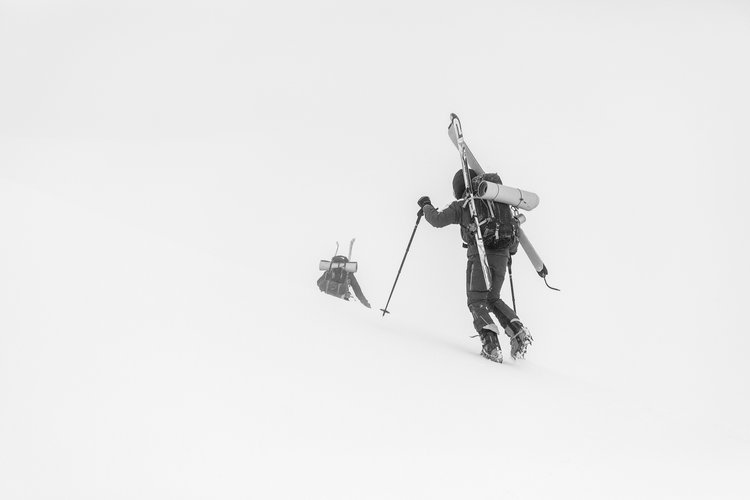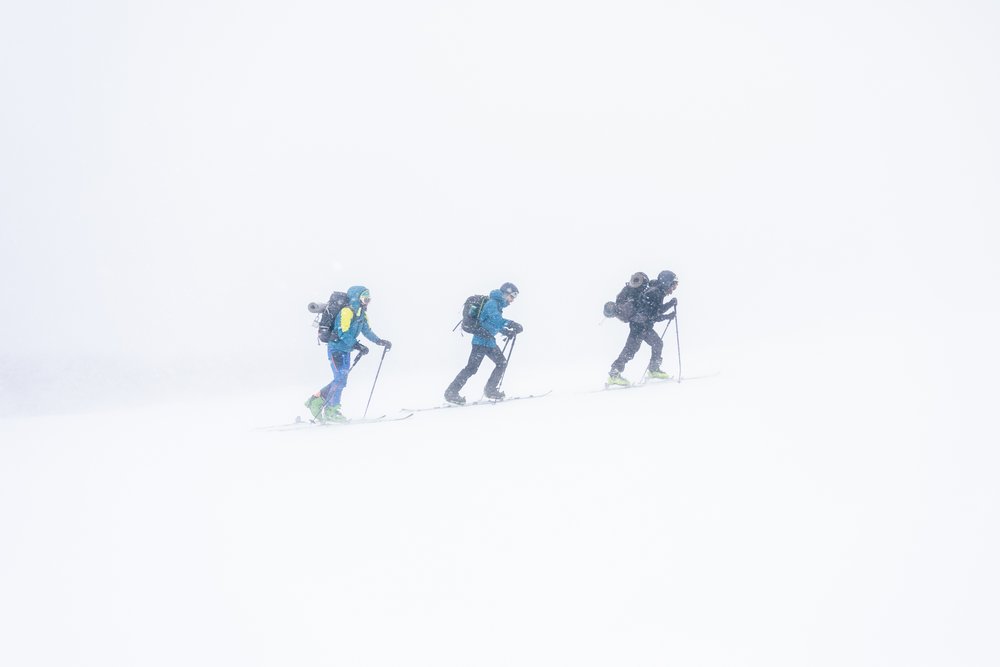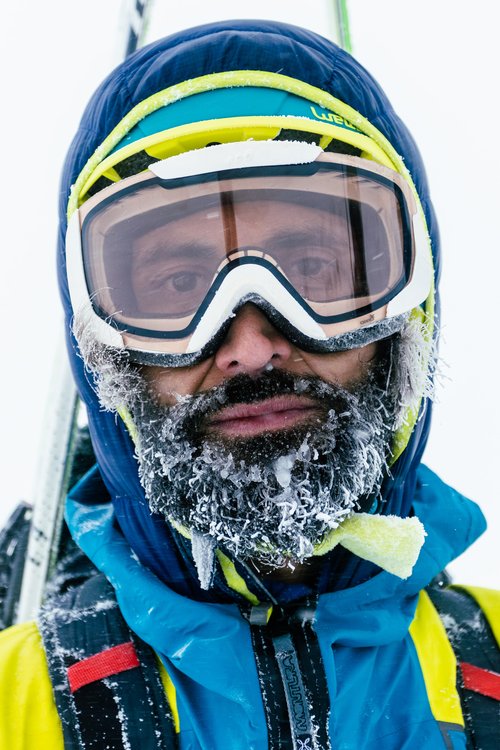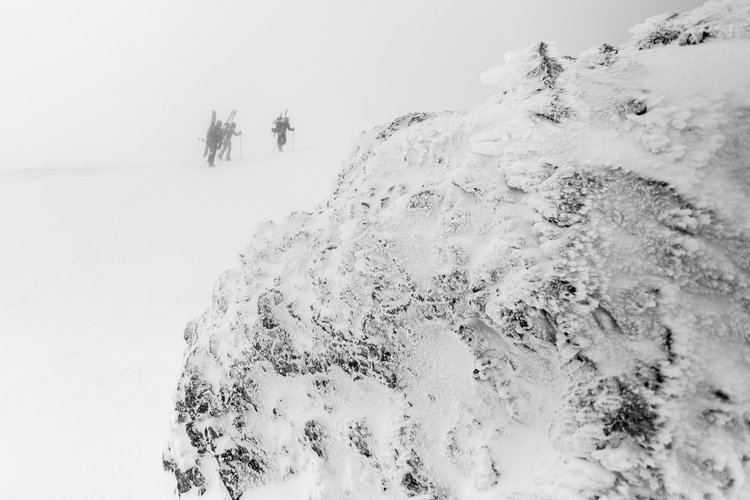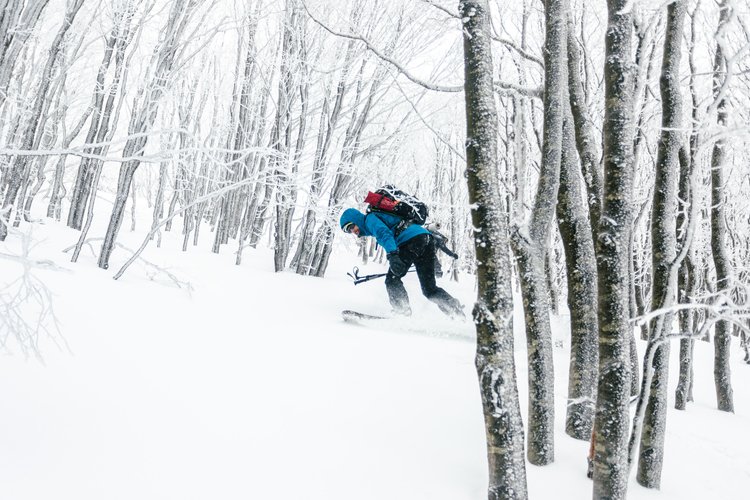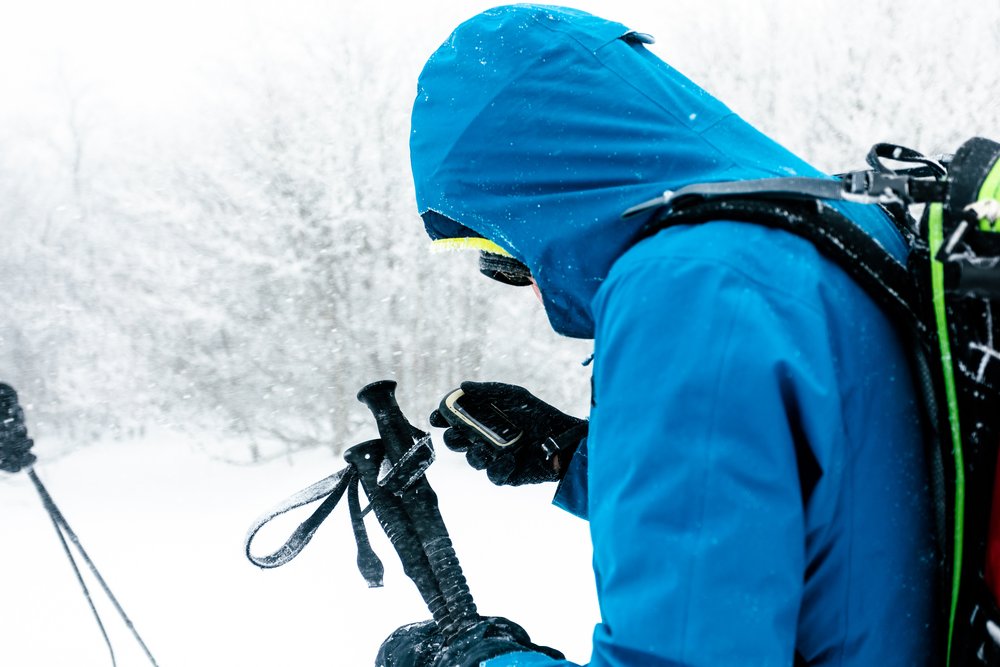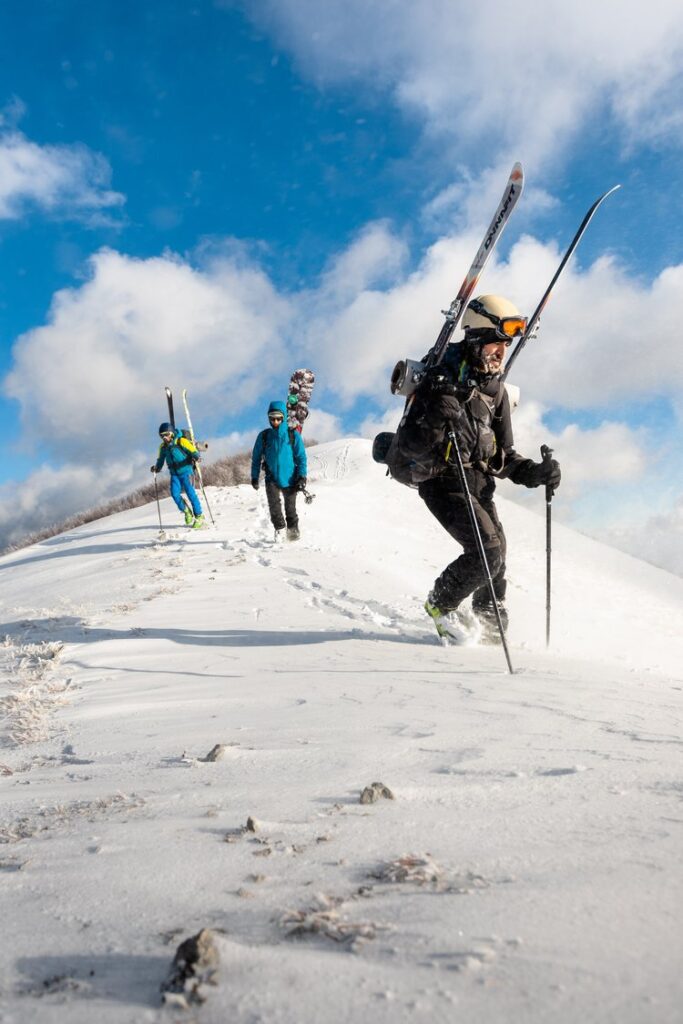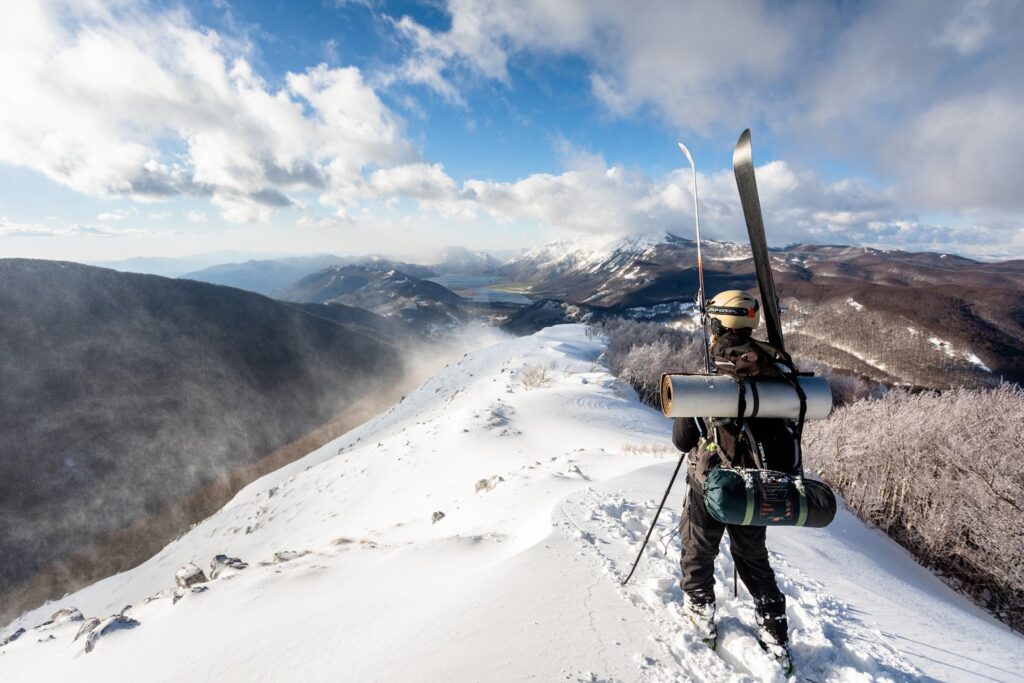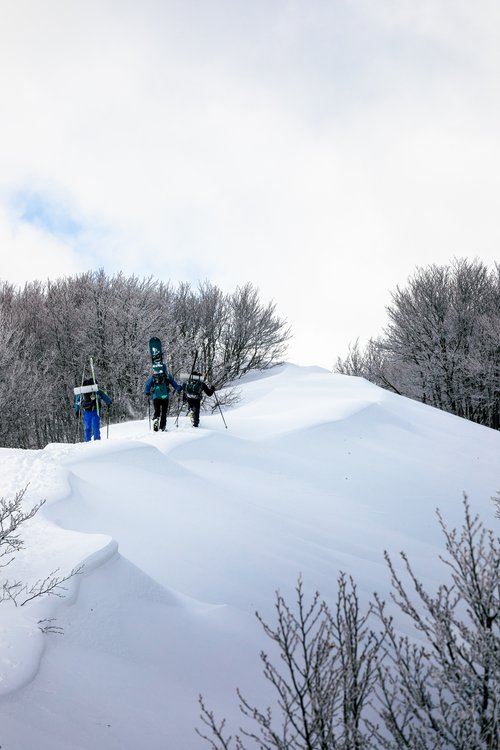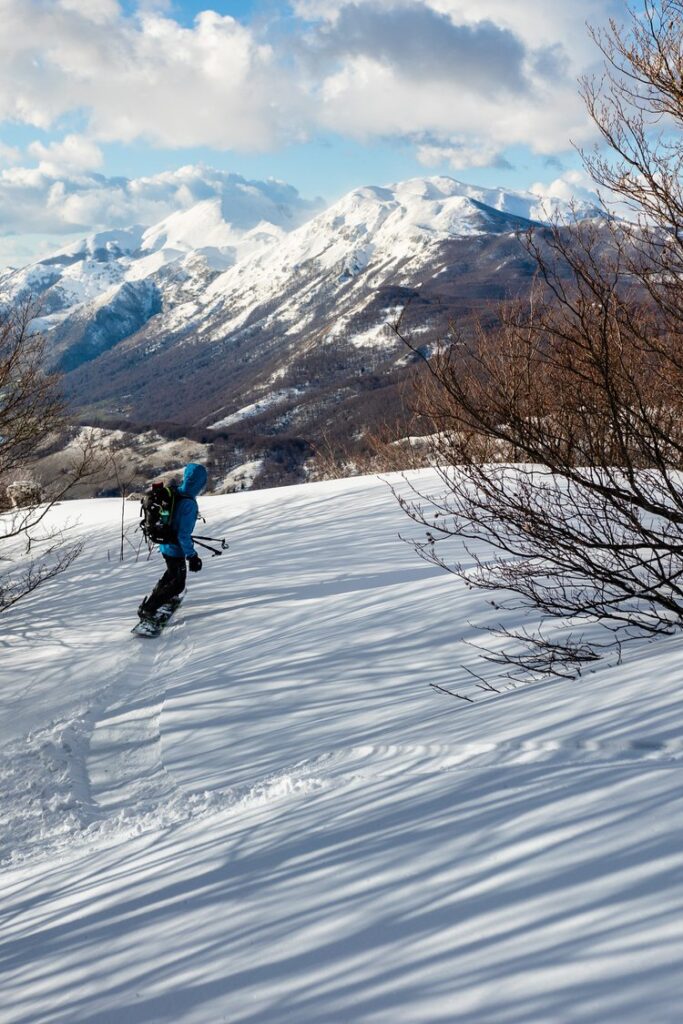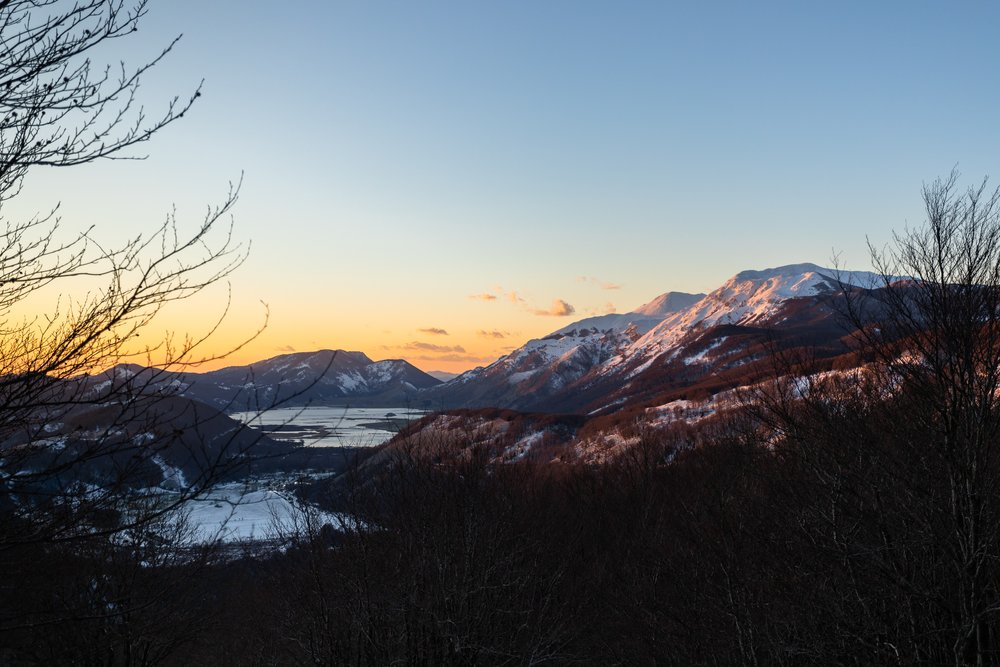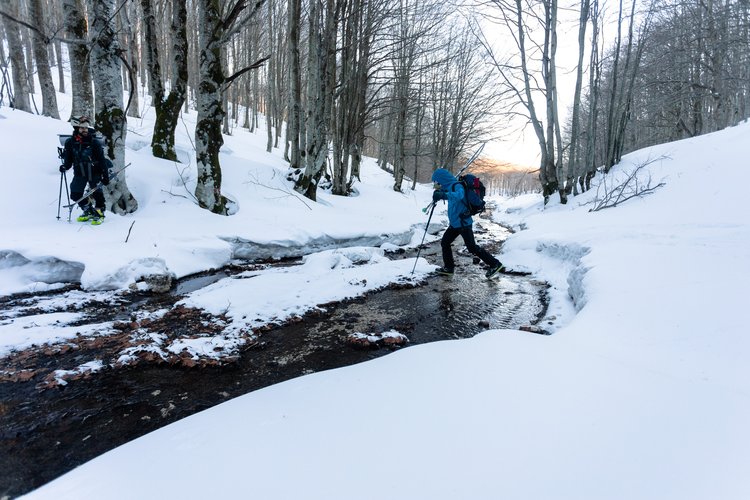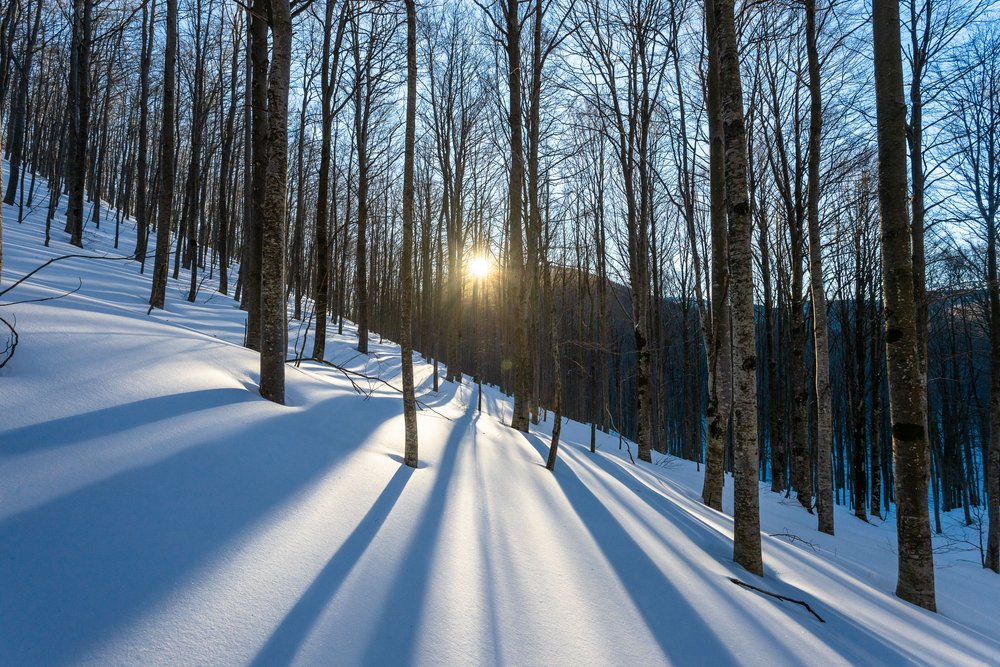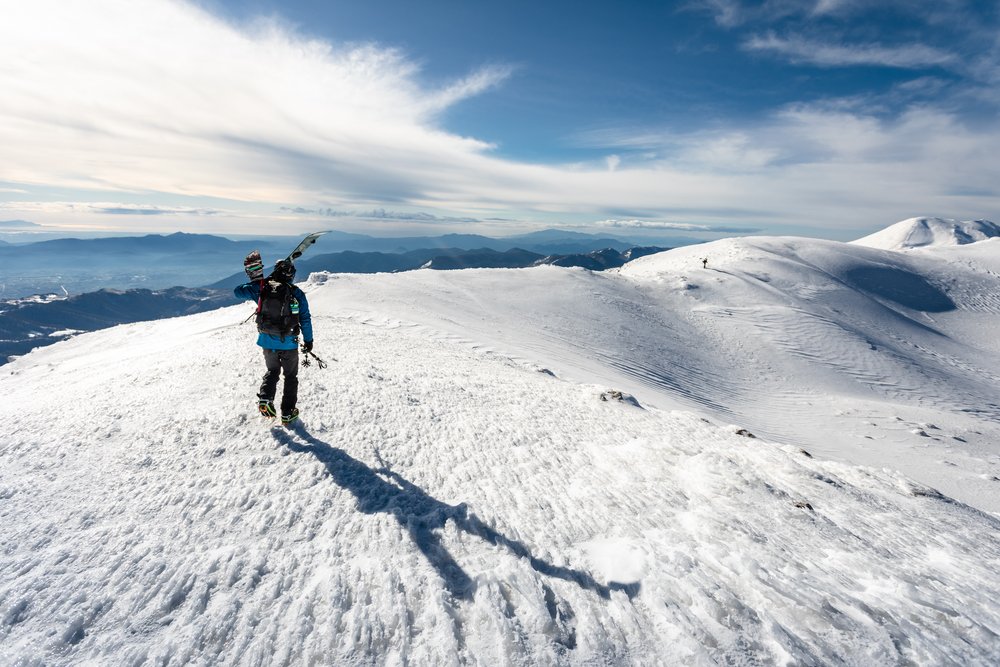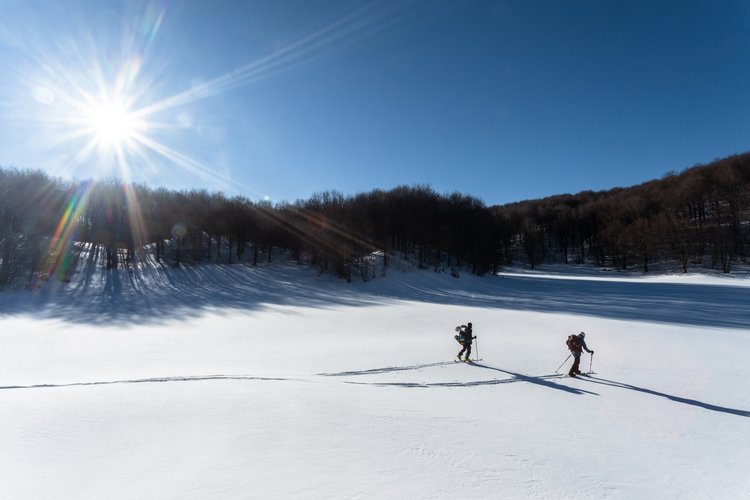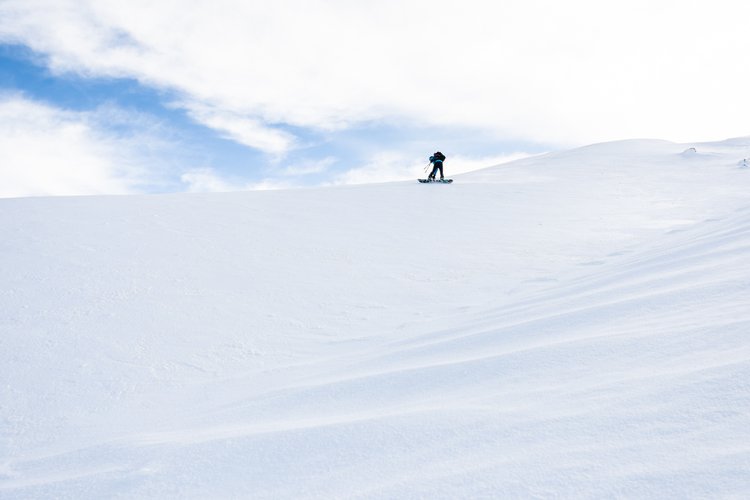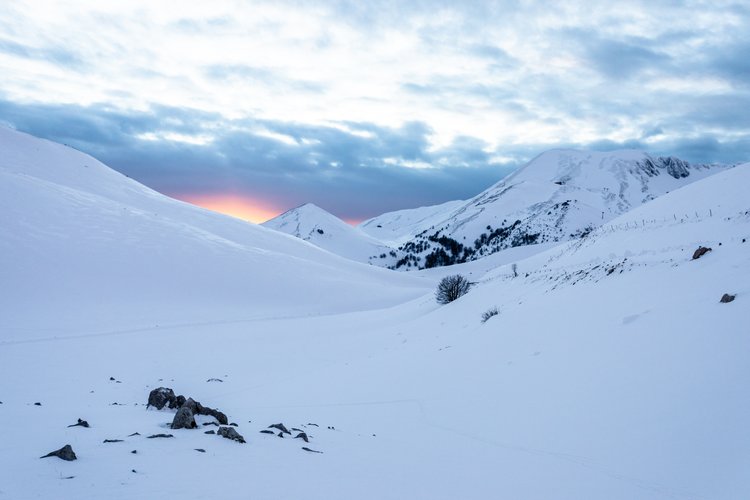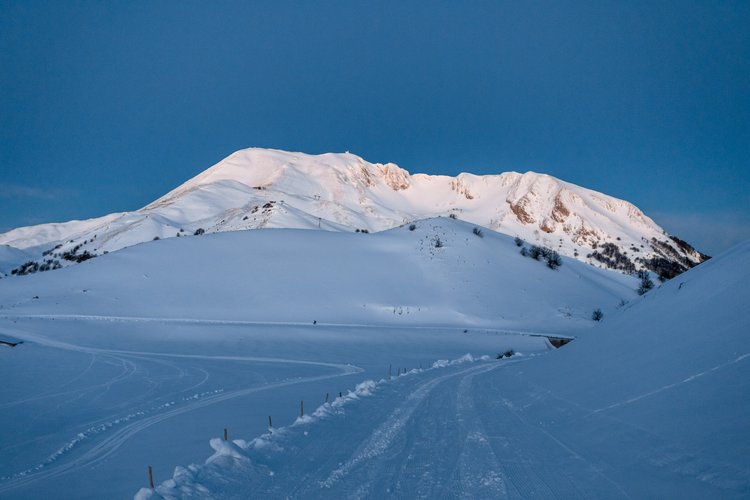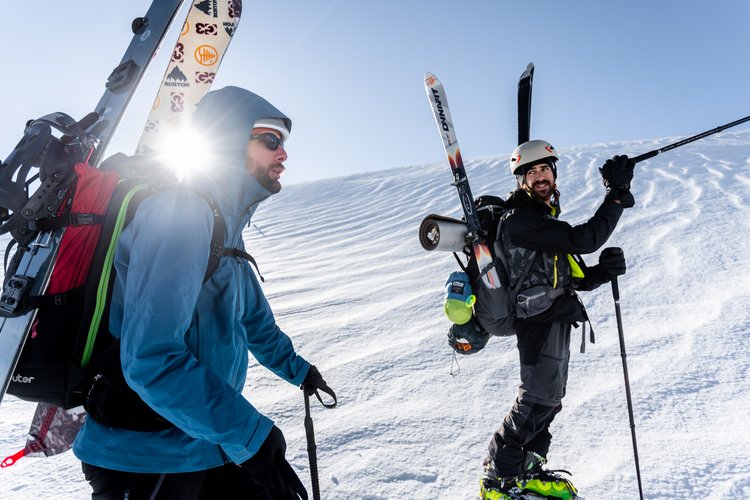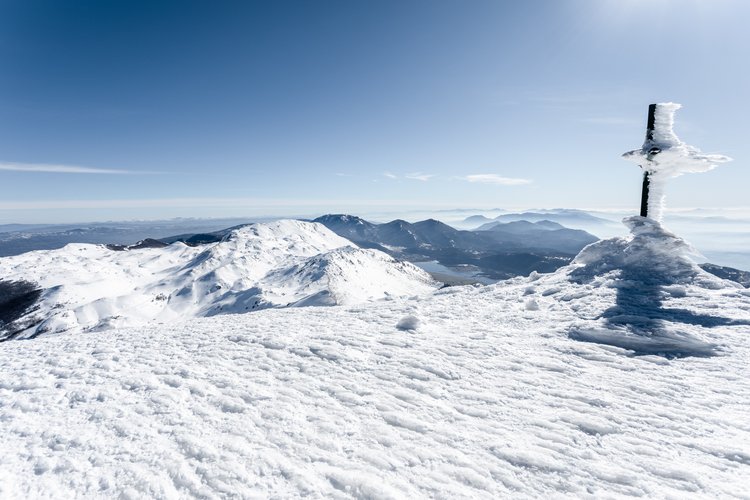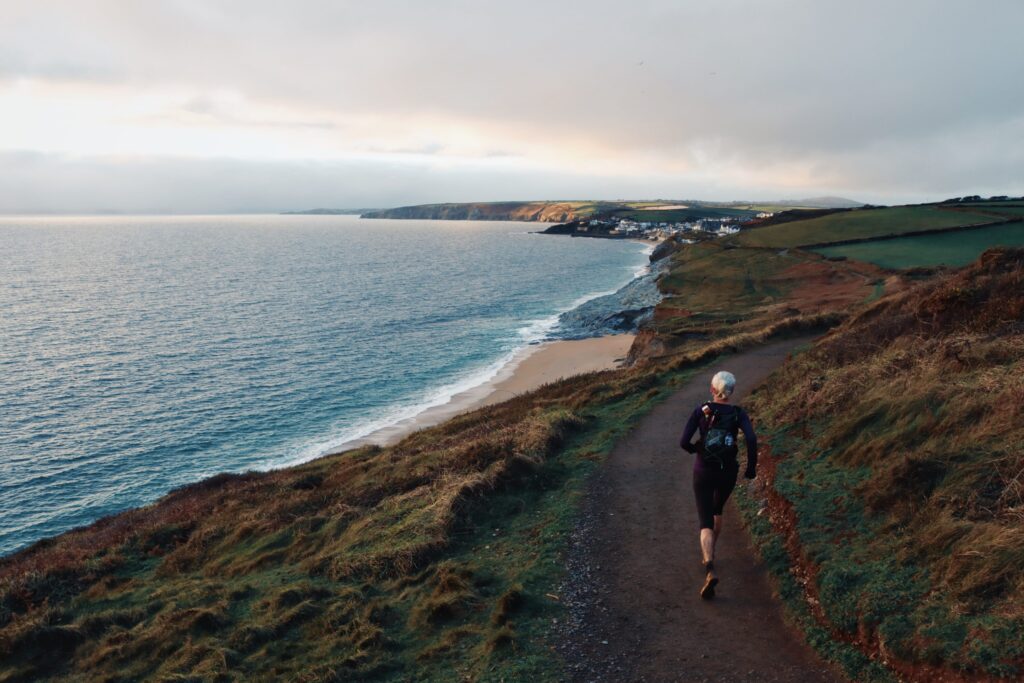Home Story The Art of Patience and Resilience
The Art of Patience and Resilience
Feature type Story
Read time 15 min read
Published Dec 13, 2021
Author Francesco Guerra
Photographer Francesco Guerra
Wedged between the neighbouring regions of Molise and Campania, the little-known Matese massif of southern Italy is a hidden gem. Despite being one of the southernmost mountain ranges of the Apennines, during winter months these rounded, windswept peaks are blasted by snow and ice. Facing the south face of these mountains, lake Matese sits at a little over 1000m above sea level, making it the highest karst lake in Italy.
This is the story of the first documented winter traverse of the Matese massif which was done over three days, 34km and a total elevation gain of 4650 meters.
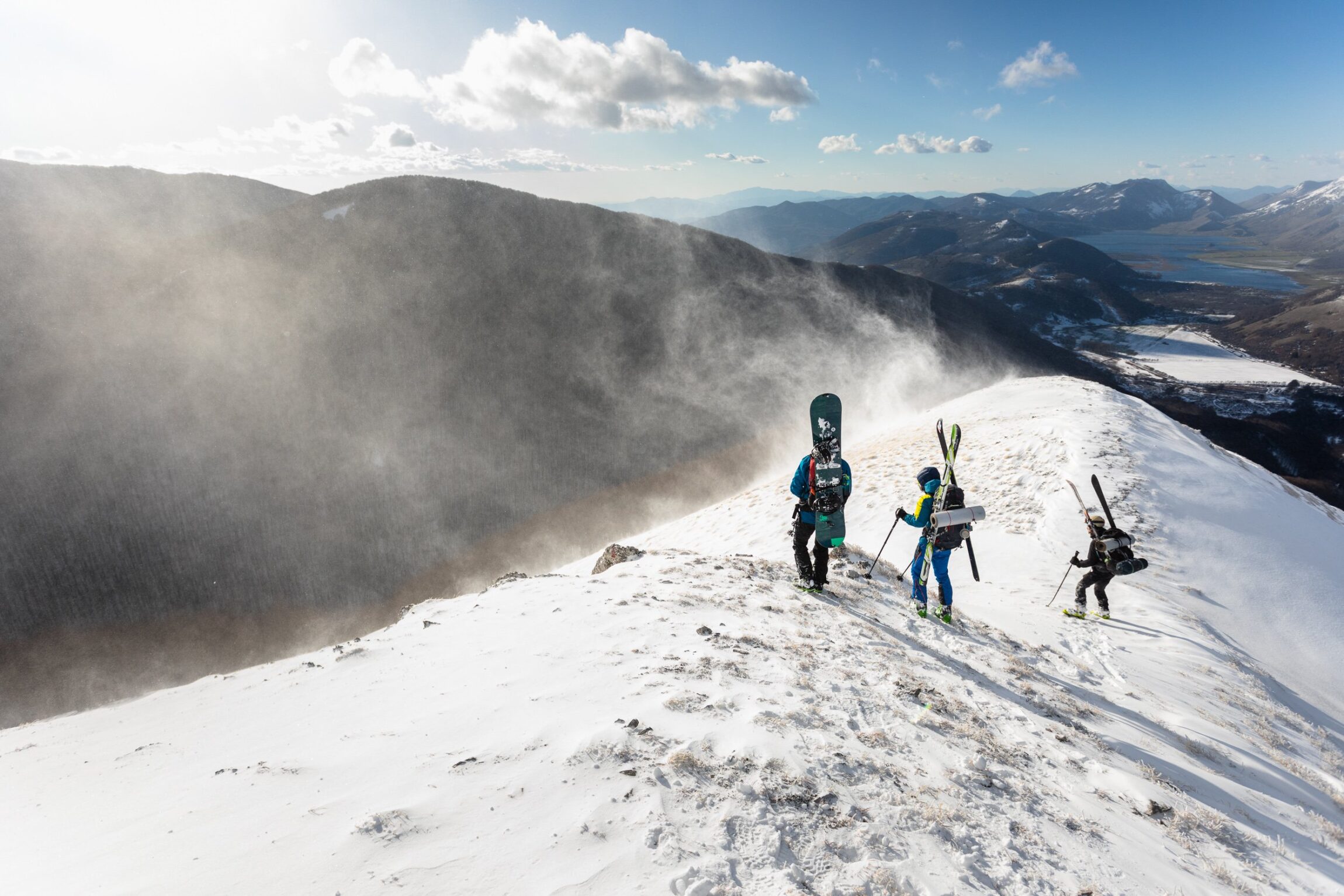
The wind is howling, fighting against us, and the crackling sound of the ice under our crampons is unsettling. We have been caught by a violent snowstorm that was not predicted by any weather forecast we’d been following, and yet we are here, freezing at -10°C in Southern Italy, where no one would expect such extreme conditions.
As far as we know, this is the first winter traverse of Matese massif. We left our cars a few hours earlier with light hearts, talking and laughing as we glided uphill on our skis. Now engulfed by the storm, we’re forced to remove our skis and proceed with crampons. The ice beneath us is thick and blown smooth by the wind, the route ahead is steep and treacherous.
Everything is blanket white. We can see nothing beyond us nor around us. The wind has risen and we’re forced to assume an almost horizontal position to just remain upright.
Clouds disperse, giving way to the mystery of what lies beneath, us nestled in the valley below
Mirko, Andrea and I follow Stefano, who has the GPS, without which we would certainly be lost. Amidst the storm, we reach the first summit, Monte Mutria (1822m) but we don’t hang around for long, opting instead for a quick descent into the forest below. Here, we take a moment to rest as we try to regain some warmth. Our lips are blue and our beards covered in ice, like the photographs I love to see about Antarctica explorers.
Finally the storm recedes. Clouds disperse, giving way to the mystery of what lies beneath, us nestled in the valley below. Until now, the surrounding landscape has been concealed under a thick blanket of drifting moisture and ice, but surrounded by the snowcapped peaks that we will traverse in the following days, Lake Matese lies uncovered, majestic in the dreamy golden light. But the winds cease to blow; lifting the snow from the ridge we walk along, the powder spirals in the air all around us. We stop for a moment to admire the show nature is providing us. We are in awe.
As we start the descent, Andrea slips on the ice, and I’m quick to follow. We both slide downwards, out of control for several meters. Luckily we both regain traction soon enough and unscathed, we continue our steady descent down with added caution to reach our destination for the night.
It’s 6.30 pm and the wind has finally stopped. The temperature has dropped to around -15°C. Even the light of the full moon that stands in the clear sky looks frozen. We set up our tents, eat and fall almost straight to sleep, exhausted from the day’s exertion.
Sunrise is a magical moment. While everything sleeps, even the air around sits still. The colours that gently paint the sky take over from the blue and black hues of the night. There is no magic though, when you have have spent the night shivering and awake. We pack away our tents as Andrea tells us that he is quitting the trip. He’s traumatised by the fall from yesterday, and he fears it could happen again, this time with greater consequence.
We spend the first hours of the morning gliding on our skis through thick beech forest. There’s barely a sound all around us. The only clue that we are not entirely alone here are the fresh paw tracks. A rabbit and a fox, the prey followed by its predator. For a moment I stop and wonder what life would be like if we as humans still had natural predators. Would our respect for nature be greater since we’d be more at its mercy?
The path is covered by sharp rocks which makes wearing our skis impossible, but we reach the second summit, La Gallinola (1923m), after the taxing uphill climb in our crampons. The view we have from here is plenty reward for all our efforts to make it up here. We can see the mountains of Central Italy, even Gran Sasso, the highest peak of all the Apennine mountain range, and the renowned isles of the Gulf of Naples. Lunch spots don’t often get much better than this!
We’re quick and efficient as we follow the rocky ridge down. At sunset, we find a crumbling and slightly eerie construction in the middle of nowhere. It’s open. Considering our sleep deprived states, to us, this place is a five-star hotel.
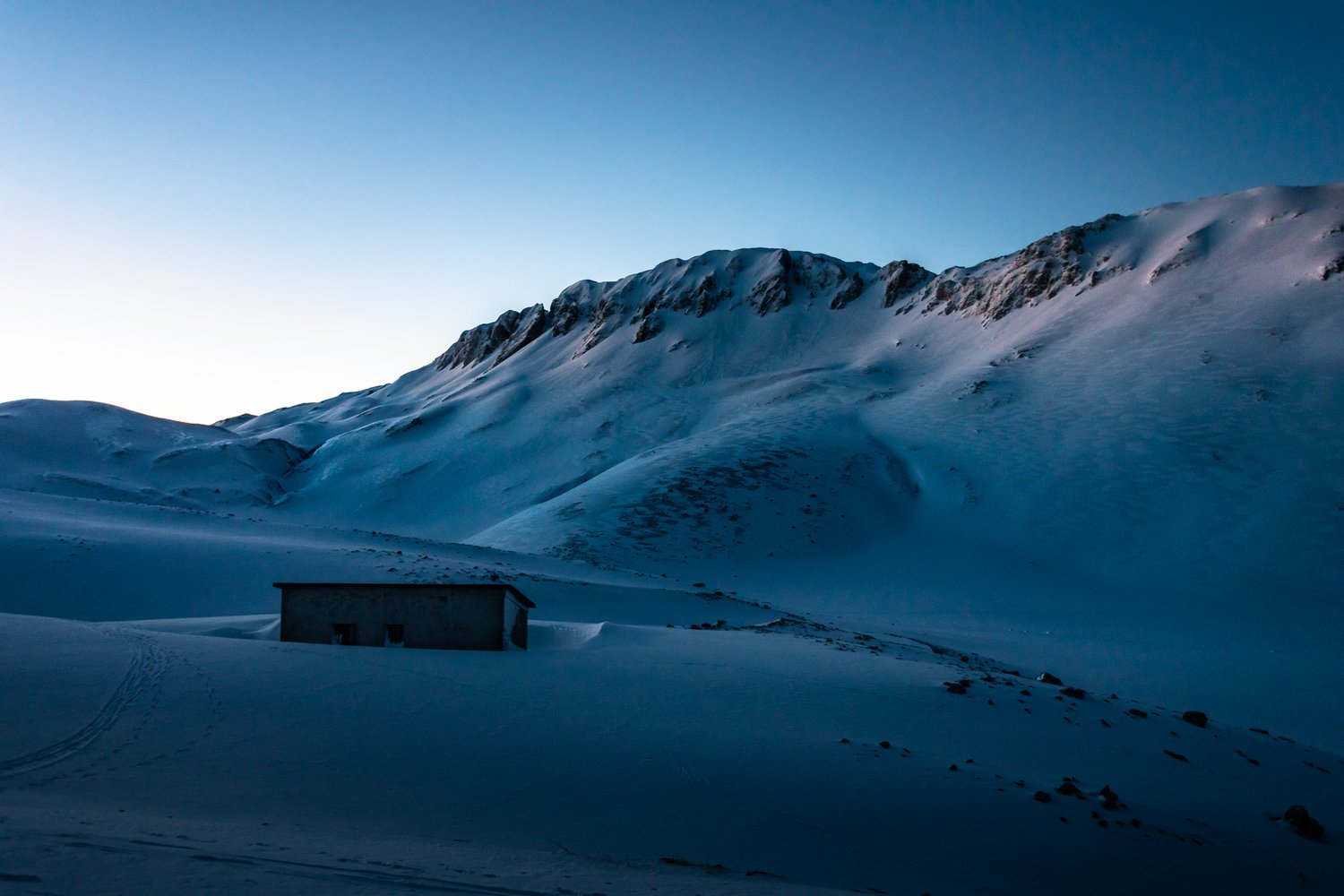
At dawn, we wake with more positivity than the day before. Mirko is the fastest of the three of us. While Stefano and I are still busy taking down the tent, he has already packed everything up and is eating breakfast.
We get out in the grasp of the blue hour. The deep blues of the clear sky are astonishing. They’re soon replaced by pastel pink and turquoise, while the peaks of the mountains around us are doused in red and orange.
At the foot of the last mountain, Mount Miletto, we collectively make the decision to climb to its 2050m summit straight rather than taking the longer, normal route in the hope it will spare us some time for the long descent. Three hours later and we’re on the top. The iron cross signalling the summit is thick with ice shaped by the wind. Just a quick stop here to rest our shoulders, and we’ll begin our route down.
The south face of Monte Miletto, we discover, is way more wild than its northern side. Well above the tree-line, here there’s no evidence of life existing, just ice, snow and rock.
We tackle a 400 meter steep traverse with varying ice conditions: in some points it’s hard, in other parts it crushes under our feet. I don’t feel safe. I look down. All that lies beneath me is a steep icy slide littered with rocks for at least 300 meters straight into the woods.
With the memory of the fall two days ago, I step slowly and with more caution than normal. ‘If you fall this time, you die. Slow and steady, just breathe!’ I say to myself. I’m terrified by the thought of another fall as I stomp at every inch of snow before taking the step.
My companions proceed way faster than me and I realise the fear is clouding my judgement.
After what seems to take forever, relieved, I allow myself to fall flat onto the level ground. As we continue, we’re able to ski once more, facing the lake as we make our way down, from an angle I’ve never seen it before.
My companions proceed way faster than me and I understand that I am perceiving danger through amplified fear
In late afternoon, soon after the sun sets beneath the mountains around us, we arrive back at the car we left just three days before. Exhausted but content, we feel privileged to have lived such an experience together.
This mountain range that runs from north to south grants you nothing, not even the beautiful landscapes that are so often taken for granted in the mountains. It forces you to struggle for every meter gained. It makes you swear and sweat, as you question why it is you’re even doing this. The Apennines afford you no discount and no shortcut, and for this I am grateful. Grateful to have have grown up and developed as a person and as a photographer on these blunt peaks. Here you have to seek the glimpses of beauty and the breathtaking moments. And it is not guaranteed that on every peak or on every path you will ever even find it.
The Apennines offer no certainties, only a slap in the face, and often for poor reward. I keep coming back though, because I’ve learned to love these mountains, despite their labels among many purists as ‘not real mountains’ as they don’t reach 3000 or 4000 meters like the Alps or the Dolomites. I love them because they’ve taught me the art of patience and resilience.
Don’t miss a single adventure
Sign up to our free newsletter and get a weekly BASE hit to your inbox
Other posts by this author
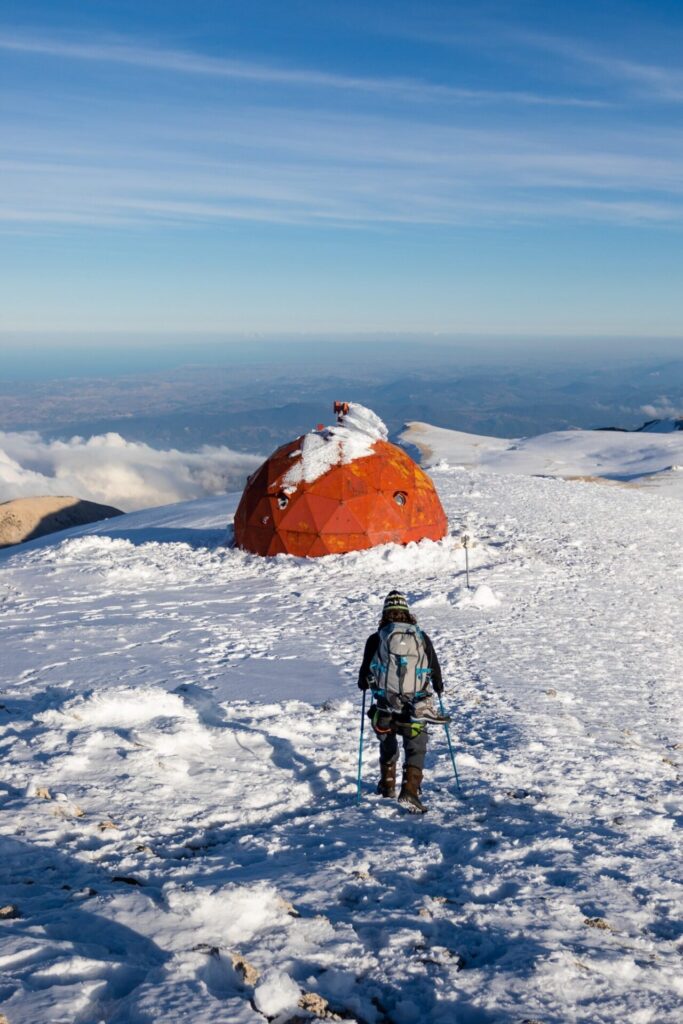
Story • Francesco Guerra • Nov 09, 2020
Alpine Restoration
A simple reminder of the power of walking in wild spaces for both mind and soul
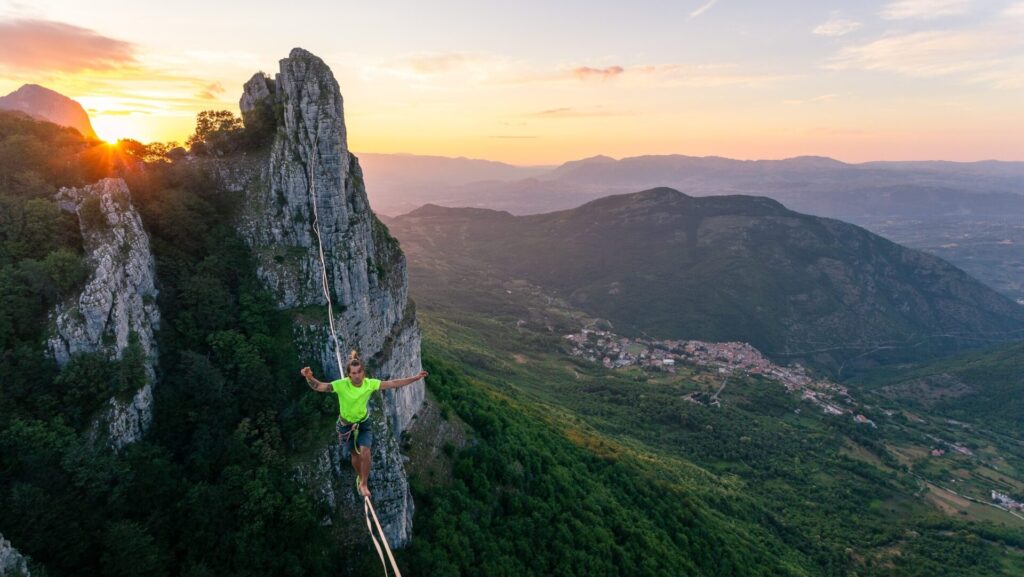
Story • Francesco Guerra • Oct 07, 2020
Finding Equilibrium
Tension, struggle and balance in the Alburni Mountains of Italy
You might also like

Video • BASE editorial team • Aug 03, 2022
No rules, No spectators
A 340-mile unsanctioned solo race from Santa Monica to Las Vegas
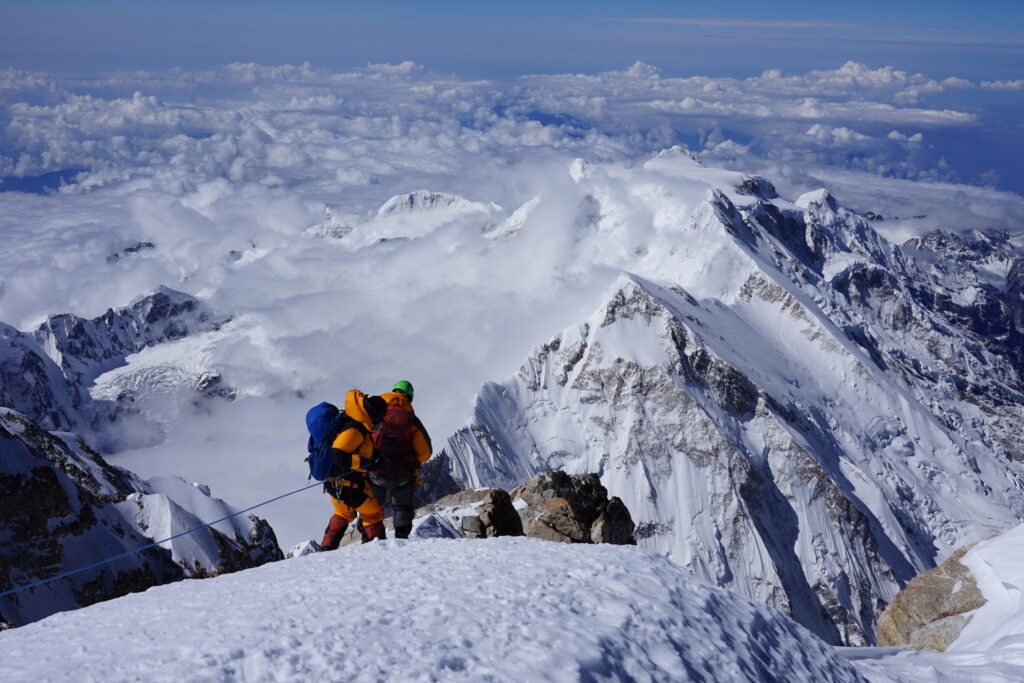
Interview • Ilona Cabral • Jul 27, 2022
Summit to City
An audacious expedition to climb Kanchenjunga and set the fastest-known-time along the Great Himalayan Trail

